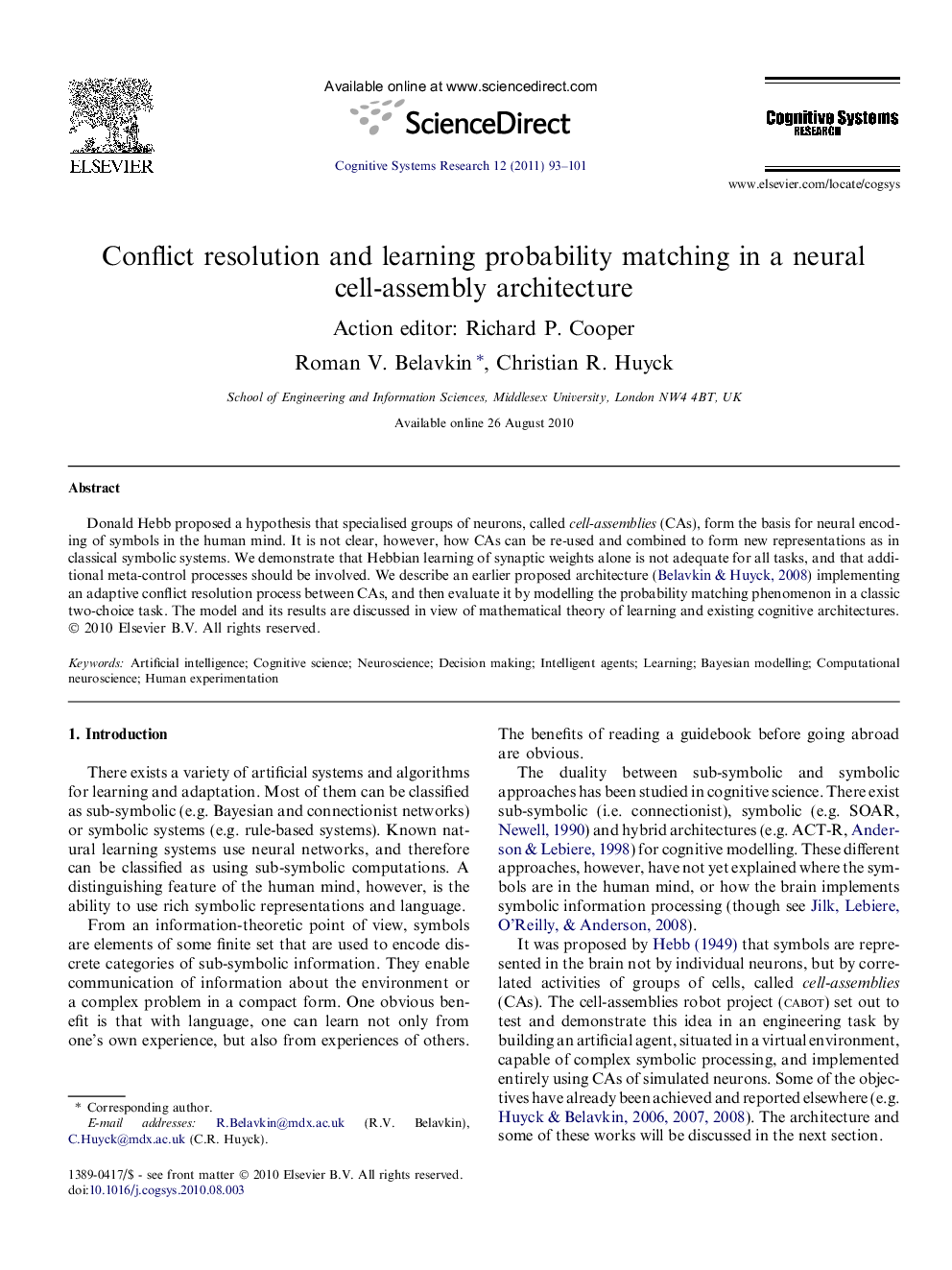| Article ID | Journal | Published Year | Pages | File Type |
|---|---|---|---|---|
| 378521 | Cognitive Systems Research | 2011 | 9 Pages |
Donald Hebb proposed a hypothesis that specialised groups of neurons, called cell-assemblies (CAs), form the basis for neural encoding of symbols in the human mind. It is not clear, however, how CAs can be re-used and combined to form new representations as in classical symbolic systems. We demonstrate that Hebbian learning of synaptic weights alone is not adequate for all tasks, and that additional meta-control processes should be involved. We describe an earlier proposed architecture ( Belavkin & Huyck, 2008) implementing an adaptive conflict resolution process between CAs, and then evaluate it by modelling the probability matching phenomenon in a classic two-choice task. The model and its results are discussed in view of mathematical theory of learning and existing cognitive architectures.
